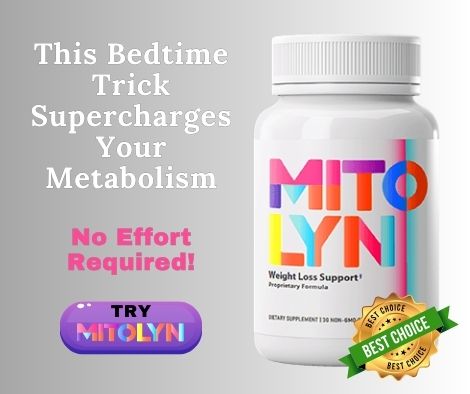Imagine that a single mineral deficiency could quietly sabotage your health, diminish your mental clarity, and accelerate aging without your knowledge. Copper—a trace mineral you probably never think about—is exactly that vital. Yet, despite its critical role in our health, copper remains misunderstood and largely ignored. Why should copper matter so much to you? Because it’s a potent catalyst in nearly every biological process in your body.
Copper is fundamental for generating energy, synthesizing neurotransmitters, maintaining heart health, and preserving your immune system. However, modern lifestyles, depleted soils, and nutrient-poor diets frequently lead to deficiencies, making it essential to understand and proactively integrate this powerful mineral into your daily life.
The Brain’s Secret Ally
Copper profoundly influences brain function and mental clarity. This mineral is pivotal in the production of neurotransmitters—chemical messengers that allow your brain cells to communicate efficiently. Specifically, copper is involved in the synthesis of norepinephrine and dopamine, neurotransmitters responsible for mood regulation, alertness, motivation, and overall mental sharpness. When copper levels drop, cognitive performance suffers, leading to brain fog, poor memory, and emotional instability.
This neurological connection has long been recognized in integrative medicine, where copper-rich diets are used to support patients with mood disorders and cognitive fatigue. In modern neurobiology, emerging studies also link copper metabolism imbalances with neurodegenerative conditions, reinforcing the importance of steady intake.
Copper also plays a role in myelin sheath formation—the protective coating around nerves that ensures fast, clear communication between brain and body. When copper levels drop too low, nerve signaling slows, weakening both mental clarity and physical coordination.
To support optimal brain function, consciously incorporate copper-rich foods like beef liver, shellfish, mushrooms, nuts, and dark chocolate into your diet. Regularly consuming these foods boosts neurotransmitter synthesis, enhancing mood, focus, and cognitive resilience against stress and aging.
The Heart’s Structural Support
Copper is also integral to your cardiovascular health, directly influencing your blood vessels’ elasticity and strength. The enzyme lysyl oxidase, dependent on copper, is crucial for maintaining the integrity of connective tissue within arterial walls. Without sufficient copper, arteries stiffen, raising blood pressure and significantly increasing heart disease risks.
In a 2013 study published in Atherosclerosis, participants who maintained adequate copper levels had healthier cholesterol profiles and improved vascular function. This aligns with older traditional practices—such as copper utensils and cooking vessels—used in regions with lower heart disease rates.
Copper is also necessary for iron metabolism, which directly affects red blood cell production. Anemia tied to iron imbalance often stems from copper deficiency rather than iron itself. This hidden connection between copper and oxygen delivery further solidifies its impact on cardiovascular vitality.
Ensuring adequate copper intake through diet or supplementation supports arterial flexibility and resilience, reducing cardiovascular strain. Aim for whole food sources like leafy greens, lentils, and sunflower seeds to enhance cardiovascular protection naturally.
Copper and Immune Intelligence
Beyond heart and mind, copper dramatically shapes your immune system. This mineral exhibits potent antimicrobial properties, destroying harmful bacteria and viruses. Moreover, copper enhances the function of white blood cells, fortifying your body’s natural defenses against illness.
Recent healthcare design innovations have revived ancient wisdom by incorporating copper into high-touch surfaces in hospitals. Copper-coated bed rails and IV poles have been shown to reduce infection rates in clinical environments—a testament to copper’s immune-protective qualities.
Historically, copper was used in medicine and sanitation long before antibiotics. Ancient Egyptians stored water in copper vessels to prevent bacterial growth—a practice that modern research confirms was microbiologically sound. Ayurveda has long prescribed copper water vessels for daily purification, showing how timeless these immune-supportive rituals can be.
Using copper-infused water vessels or utensils has been a long-standing practice in traditional cultures. Drinking water stored in a copper vessel overnight can naturally sterilize the water and gently infuse trace amounts of copper, reinforcing immunity daily.
Skin Deep: Copper’s Anti-Aging Blueprint
Copper plays a pivotal role in preserving youthful skin and preventing premature aging. It promotes collagen and elastin production—proteins essential for firm, resilient skin. A lack of copper contributes to wrinkles, sagging, and slower wound healing, as your body’s connective tissue weakens.
What was once folklore—using copper in beauty rituals—is now validated by dermatological science. Copper peptides are increasingly used in high-end skincare, shown to improve skin density, reduce wrinkles, and repair damage from environmental stressors. Even copper-infused pillowcases are now available, offering gentle nightly support for skin regeneration.
Topically applied copper also enhances angiogenesis—the formation of new blood vessels—which helps oxygenate and nourish damaged skin. This process supports faster healing from cuts, burns, and abrasions, making copper an essential tool for skin recovery and regeneration.
Incorporate copper through dietary intake or topical skincare products containing copper peptides, scientifically proven to boost skin regeneration, reduce fine lines, and enhance elasticity. Regular use can significantly slow visible aging signs and maintain vibrant, youthful skin.
The Balancing Act: Copper and Zinc
Recognizing copper’s critical role is just the first step. Overloading can have adverse effects, causing imbalance and toxicity. Balance copper intake by pairing it with zinc-rich foods, as zinc naturally counterbalances copper, maintaining optimal ratios for health.
A balanced copper-to-zinc ratio not only protects against toxicity but also supports immune and hormonal harmony. Multivitamins or targeted mineral formulas should reflect this ratio to avoid disrupting the body’s equilibrium.
Research shows that both copper and zinc influence the same metabolic pathways, especially in the immune and nervous systems. Too much of one can create a functional deficiency in the other. Long-term supplementation should always be monitored, ideally with guidance from a practitioner who understands mineral synergy.
Recognizing Copper Deficiency
Copper deficiency creeps in gradually—disguised as common complaints that most people overlook or misattribute. Fatigue that lingers despite rest. Low mood that resists improvement. Brittle hair, pale skin, and frequent infections that feel like bad luck.
As deficiency deepens, the signs sharpen. Wounds heal slowly. Hands and feet may feel cold. Collagen weakens, and with it, the integrity of joints, blood vessels, and skin. Some experience numbness, tingling, or balance issues—signals that the nervous system is no longer firing cleanly.
Anemia resistant to iron supplementation often points to copper’s role in iron metabolism. If iron levels remain low despite supplements, copper is the missing link.
Several factors raise the risk: overuse of zinc supplements, chronic digestive conditions like celiac or Crohn’s disease, long-term use of antacids or proton pump inhibitors, and diets dominated by refined, mineral-depleted foods.
Even those who eat well can be vulnerable. Copper absorption happens in the stomach and small intestine—areas easily disrupted by inflammation, stress, and pharmaceutical interference. Modern agriculture has also stripped the soil of trace minerals, reducing copper levels in produce.
Testing copper status involves measuring serum copper, ceruloplasmin, or red blood cell copper. These markers, when interpreted together, offer a more complete picture than a single value alone.
Once copper is restored—through food, supplementation, or supportive practices like drinking from copper vessels—many people notice shifts within days. Sharper thinking. Stronger immunity. Improved circulation. Fewer infections. More resilience under pressure.
Recognizing deficiency early turns a slow unraveling into a quick correction. Miss it, and what seems minor becomes a system-wide imbalance that touches everything from skin to cognition.
How to Get Enough Copper
Not all copper sources are created equal. Whole foods provide bioavailable forms of copper that your body can readily absorb and regulate. Beef liver, oysters, sesame seeds, mushrooms, spirulina, and dark chocolate offer reliable sources of naturally bound copper.
Copper sulfate—common in fortified foods and low-quality supplements—has lower absorption rates and may cause digestive irritation in sensitive individuals. In contrast, chelated forms such as copper bisglycinate or copper gluconate are gentler on the stomach and offer higher bioavailability.
For those using supplements, pairing copper with zinc in a balanced ratio prevents imbalances. Supplementation should reflect your individual needs and be guided by lab testing or professional consultation.
Beyond supplements and diet, copper can be introduced through time-tested traditional methods that remain relevant today. Drinking water stored in a copper vessel overnight allows trace amounts of the mineral to infuse naturally.
Cooking with unlined copper pots was once common in many cultures, valued for its ability to conduct heat evenly and infuse small amounts of copper into acidic foods. While modern cookware often relies on copper linings for safety, pure copper pots can still be used safely for certain applications, especially when cleaned and maintained correctly.
Even wearing copper jewelry against the skin—such as bracelets or rings—has been explored in some traditional healing systems as a passive absorption method, though clinical research in this area remains limited.
Bringing copper into your daily routine requires intention—and a return to methods that quietly nourished generations long before supplements existed.
Final Thought: A Metal That Mirrors Your Metabolism
The copper balance in your body reflects a deeper truth about wellness: everything is interconnected. Embracing copper’s power can radically shift how you view health—from isolated symptoms to a holistic integration of nutrients. The hidden key to exceptional vitality lies not in exotic solutions but in understanding and respecting the delicate mineral balance within your body.
Copper is more than a trace element—it’s a cellular signal, a structural foundation, and a biological activator. When you nourish this mineral, you feed the systems that power your thinking, protect your heart, and regenerate your cells.
Modern health often looks forward. But sometimes, the answer lives in what we’ve forgotten. And copper—ancient, essential, and deeply intelligent—is one of those answers.
Prioritize copper, and you prioritize the long-term intelligence of your body.




